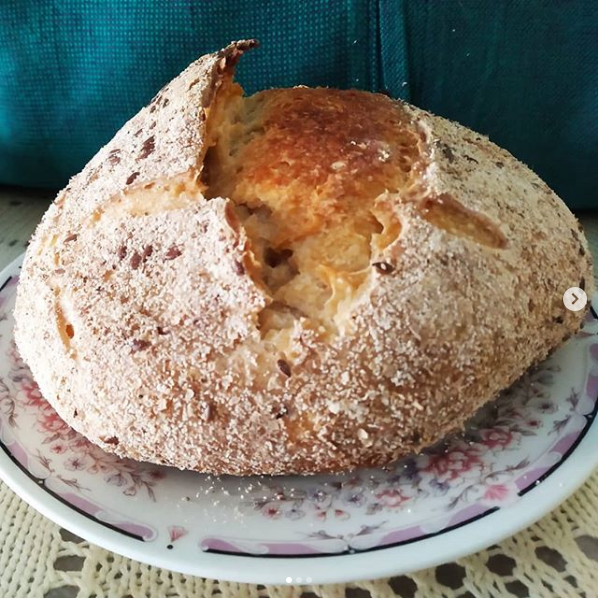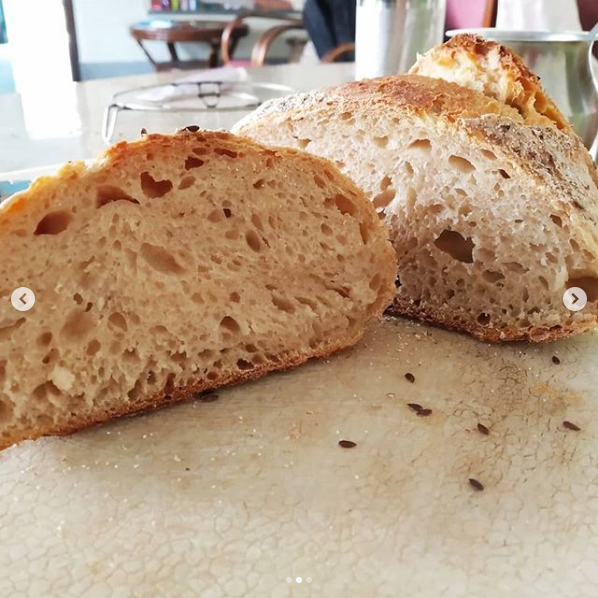
Sourdough boule in 30C + temps, and OTG, finally!
Finally, I got a sourdough boule where the scoring actually worked! Whole wheat starter, rest maida (regular store bought apf) 66% hydration. Recipe from Teresa Greenway's Sourdough Udemy course. Thanks to all the suggestions in my previous post two weeks ago about feeding my starter and refrigerating it in our hot weather.
140gms starter, 240 gms water, 400 gms maida, mixed dough in the evening, did 4 stretch and folds over 2.5 hours, then put overnight in fridge. Early in the morning, reshaped 30 minutes after taking out of fridge, and proofed for 2 hours.
Still need to fine tune starter ripeness and baking times. My 100% whole wheat starter (which had been in the fridge for ten days) had been brought out and fed for nearly 8 hours (1:2:2). It was plenty bubbly on the underside (I could see through the glass) but not bubbly on top, and not really doubled. I should have probably waited a bit more? It sank to the bottom when I tried the float test, but does that always work for WW starters?
I put a granite stone in place of the bottom rack in my OTG, and preheated it to 250C for about 30 minutes before sliding the loaf on to it, at which time I reduced it to 230C and baked for 40 minutes. The stone sure makes a big difference to my OTG's heating consistency, but the crumb still seems a bit gummy or underdone? Not sure if that's the temperature or something wrong with the proofing/structure.


So long way to go, but I never got a rise like that before! It was great to watch through the glass. Also tastes great. I am going to practise this loaf for a few times, I think.


The flour you used could have some impacts on the final result of the bread. Indian flour is normally bleached and has high level of damaged starch (see this reference). Flour with high level of damaged starch produces weaker dough (so less volume of bread dough) and is better used in flat bread recipes (see this reference).
The Effect Of Damaged Starch On The Quality Of Baked Good
For good quality breads, there has to be a balance between the amounts of water used in the kneading, protein content of the flour, the amount of damaged starch and α-amylase activity. These values also differ in different bread making methods. In fast bread processes, with short resting time, the effect of damaged starch in providing substrate is minimal, but with long fermentation processes the effect is substantial. It has been determined that the level of damaged starch is less important in whole meal bread than in white bread. Except for some biscuit and cake types, wheat with low DS is preferred in cake making (POMERANZ 1988).
• It has a positive influence on the water absorption.
• It can lead to disastrous results during bread making.
• Enzymatic methods are not simple.
Hmm. So the slightly underdone, gummy feeling to the crumb might be because of the starch damage in this type of flour? I'm actually reasonably satisfied with the kind of yeasted sandwich bread the maida (Indian refined white flour) produces. But I'm only just foraying into sourdough and more traditional shapes.